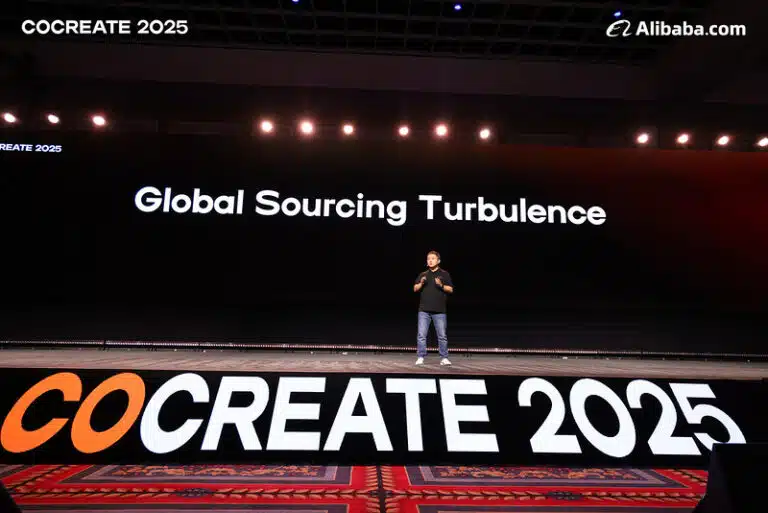Foxconn, officially Hon Hai Precision Industry Co., Ltd., is a multinational electronics contract manufacturing company headquartered in Taiwan. Founded in 1974, it is renowned for producing consumer electronics for major companies like Apple, Microsoft, and Amazon.
As of 2023, it employed approximately 90,221 people globally and reported an estimated annual revenue of $4.1 billion. The company’s manufacturing operations span multiple countries, with significant facilities in China and other regions.
Foxconn has embraced AI as a core pillar of its future strategy. The company is leveraging AI to enhance manufacturing efficiency through smart factories and automation.
The company set up Foxconn Industrial Internet (FII) as its subsidiary to focus on smart manufacturing, industrial internet solutions, and advanced technologies such as artificial intelligence (AI), cloud computing, and robotics, per FII investing in AI-related products, such as AI servers, gave the company a 200% revenue growth in the first three quarters of 2024 compared to the previous year.
This article explores two compelling AI use cases at Foxconn:
- Adopting digital twins to improve margins: Leveraging algorithm-driven automation and digital twin technology to optimize workflow, lower energy consumption, and improve profitability.
- AI-powered quality inspection to enhance efficiency: Deploying deep learning algorithms for quality inspection to boost accuracy, reduce defects, and lower rework costs.
Adopting Digital Twins to Improve Margins
The electronics manufacturing industry is widely recognized as a low-margin sector due to intense cost pressures, rising labor and material costs, and the need to maintain competitive pricing for clients. For example, the Consumer Electronics Industry reported an average net margin of just 13.4% in Q4 2024, reflecting the tight profitability margins within the sector despite sequential revenue growth of 6.64% during the same period.
Additionally, Foxconn’s expansion into AI server production and electric vehicles (EVs) introduces complexities such as managing high energy consumption, ensuring product quality, and scaling operations to meet growing demand. Supply chain disruptions, geopolitical tensions, and sustainability pressures further complicate its ability to maintain operational agility and profitability.
These challenges necessitate advanced technological solutions to optimize processes, reduce waste, and enhance scalability — setting the stage for Foxconn’s collaboration with Siemens to build the “factory of the future.”
In 2024, Foxconn signed an MoU with Siemens to drive digital transformation and sustainability in manufacturing. Their partnership’s key focus is integrating AI to power the “factory of the future.”
The collaboration aims to build a smart manufacturing ecosystem by leveraging the following AI-driven innovations:
- Siemens Xcelerator: A software and machine learning-powered solution suite to streamline Foxconn’s engineering and manufacturing workflows.
- Digital twin technology: Siemens’ digital twin technology will create virtual representations of Foxconn’s factories, enabling in-depth simulations and optimizations before physical implementation.
- AI for Automation: Implementing AI-driven automation solutions to enhance efficiency and accuracy in manufacturing processes, including electronics manufacturing services (EMS) and contract design and manufacturing services (CDMS) for electric vehicles.
- Data-Driven Optimization: Algorithm-based analysis of immense data loads generated by manufacturing processes to identify patterns, predict equipment failures, and optimize production schedules.
While the press release cited above does not specify the exact AI algorithms and implementations, we can extrapolate the likely workflow based on industry best practices and the described goals:
- Data Acquisition: Collect data from various sources within Foxconn’s manufacturing facilities, including sensors, equipment logs, and production records.
- AI Model Training: Utilize machine learning algorithms to train AI models on the collected data, enabling them to recognize patterns and predict outcomes.
The training process could involve:
- Predictive Maintenance: Training models to predict equipment failures based on sensor data and historical maintenance records.
- Process Optimization: Using AI to identify optimal process parameters for various manufacturing steps, such as temperature, pressure, and speed.
- Quality Control: Implementing AI-powered visual inspection systems to detect real-time defects.
- Digital Twin Simulation: Digital twin technology is used to create virtual models of factories and simulate different scenarios using AI models.
- Real-Time Optimization: Deploy AI models to optimize manufacturing processes in real time, adjusting parameters based on current conditions and predicted outcomes.
- Feedback Loop: Continuously monitor AI models’ performance and update them with new data to improve their accuracy and effectiveness.
The video below showcases Siemens’ digital twin technology in action, demonstrating how virtual replicas of CNC machines enable manufacturers to simulate and optimize production processes before physical implementation:
Foxconn’s partnership with Siemens could significantly enhance its AI-driven manufacturing operations, particularly in the production of AI servers, which have become a major growth driver for the company.
In 2024, Foxconn reported record quarterly revenue of T$2.13 trillion (~USD$64.72 billion), with AI servers contributing 26% of total revenue—a figure expected to surpass consumer electronics soon.
The company’s growth aligns with a strategic shift toward AI infrastructure, supported by Siemens’ Xcelerator portfolio and digital twin technology, which optimize workflows and improve factory efficiency.
According to a NVIDIA blog on Foxconn and Siemens’ partnership, by leveraging Siemens’ advanced automation tools, Foxconn could reduce energy consumption by over 30%, cut emissions, and streamline production processes, further boosting margins in its AI server division.
AI-Powered Quality Inspection to Enhance Efficiency
Manufacturers frequently grapple with challenges in quality control that adversely affect operational efficiency and profitability. Per a research paper published by the Department of Industrial and Production Engineering Nnamdi Azikiwe University, high error rates in manual inspections can lead to increased defects and customer dissatisfaction.
Additionally, the financial burden of rework and scrap is substantial. Rework and scrap, resulting from poor quality, can lead to overwhelming costs, underscoring the importance of effective quality management.
According to a case study published by Huawei, Foxconn partnered with Huawei to adopt its Ascend Smart Manufacturing Solution for AI-powered quality inspection of its smart PV controllers. At Foxconn, AI computing and algorithms are used to check whether silicone grease applied to smart PV controllers has the correct color, whether the amount of silicone is insufficient or missing, and whether nameplates are missing, upside down, or wrongly attached.
Huawei’s Industrial AI-Powered Quality Inspection Solution claims to address:
- Operation compliance detection
- Defect detection
- Position alignment
- Measurement challenges
Per the study documentation cited above, Huawei leveraged its expertise as a modern manufacturing enterprise to develop an “Industrial AI-powered quality Inspection Solution” that integrates AI, cloud computing, and big data for smarter quality control.
Though Huawei has not disclosed how the solutions work, company press releases relay that the platform is built on insights from over 200 production lines. The solution offers more than 800 industrial-grade image processing tools, enabling precise defect detection across industries like automotive and electronics. Automating inspections enhances accuracy, reduces errors, and streamlines production, delivering unique value to manufacturers.



















